Wanting to be an artist or creative is step one. Following through means investing in learning your craft, but we’ve heard from so many aspiring artists and creatives who feel unsure about where to start and so we’re incredibly grateful to the artists and creatives who’ve agreed to share their stories of how they learned their craft.
Negheen Kamkar
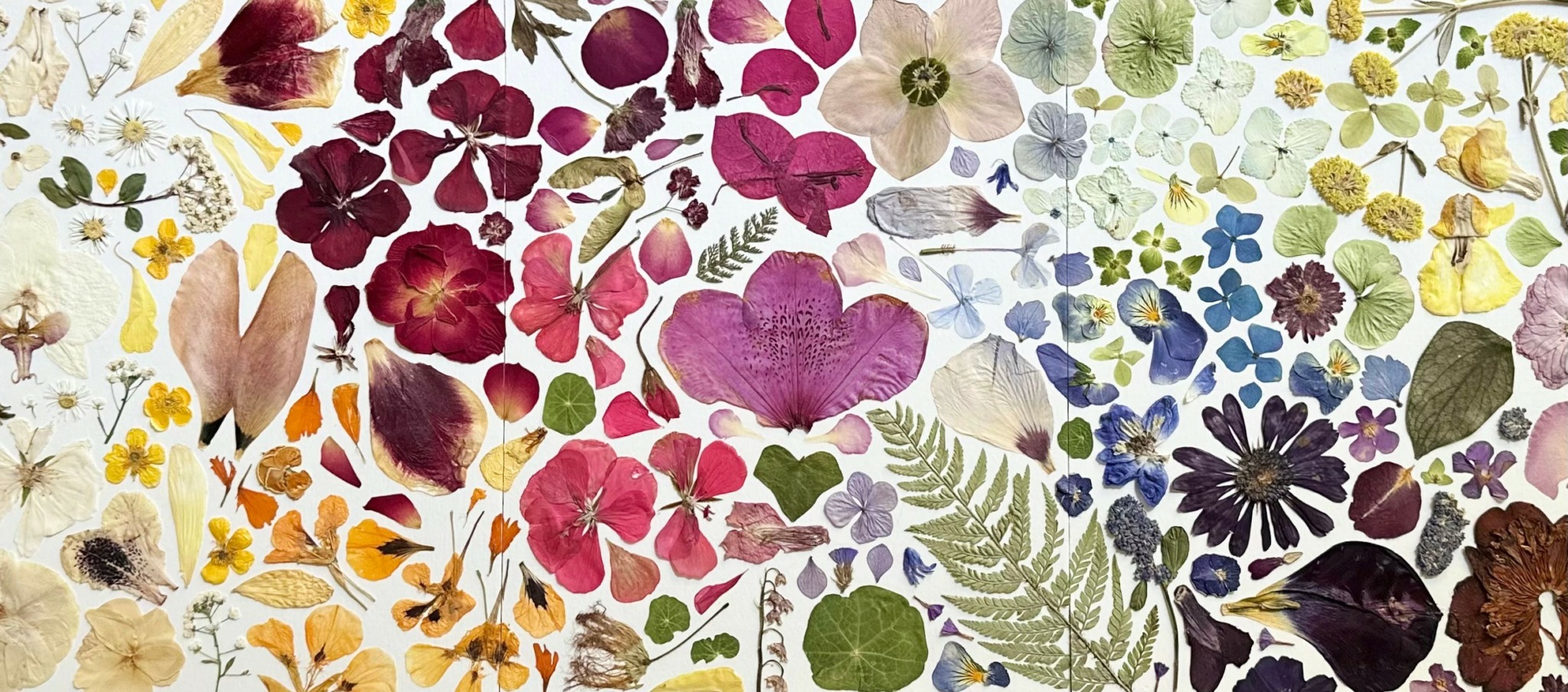
Today I run a small business where I create works of art using real, dried botanicals (dried 3-D flowers or pressed flowers). I’m entering my 5th year of building a system of modern and traditional preservation techniques. And I’m still learning and evolving my craft! The biggest lesson I’ve learned has been through my living situation, which has changed a few times. I started off in a small 500 sq ft studio that was located above the building heating system so my apartment was always warm. I had to be methodical about how I dried and stored my flowers. Too much heat and you lose color and flowers become brittle. Later, I moved into a larger apartment which offered more space in a cooler unit; but, of course I didn’t expect to have a humidity problem! What I learned in the previous apartment no longer applied to my new studio set up, and I had to change tactics and build new systems for drying and storing botanicals. However, what initially appeared to be a frustration with these different living situations ended up being great lessons in honing my craft of botanical preservation! Now I know how to manipulate environmental conditions like temperature, humidity and light to influence the preservation process for a variety of art projects. Read more>>
Andy Rice
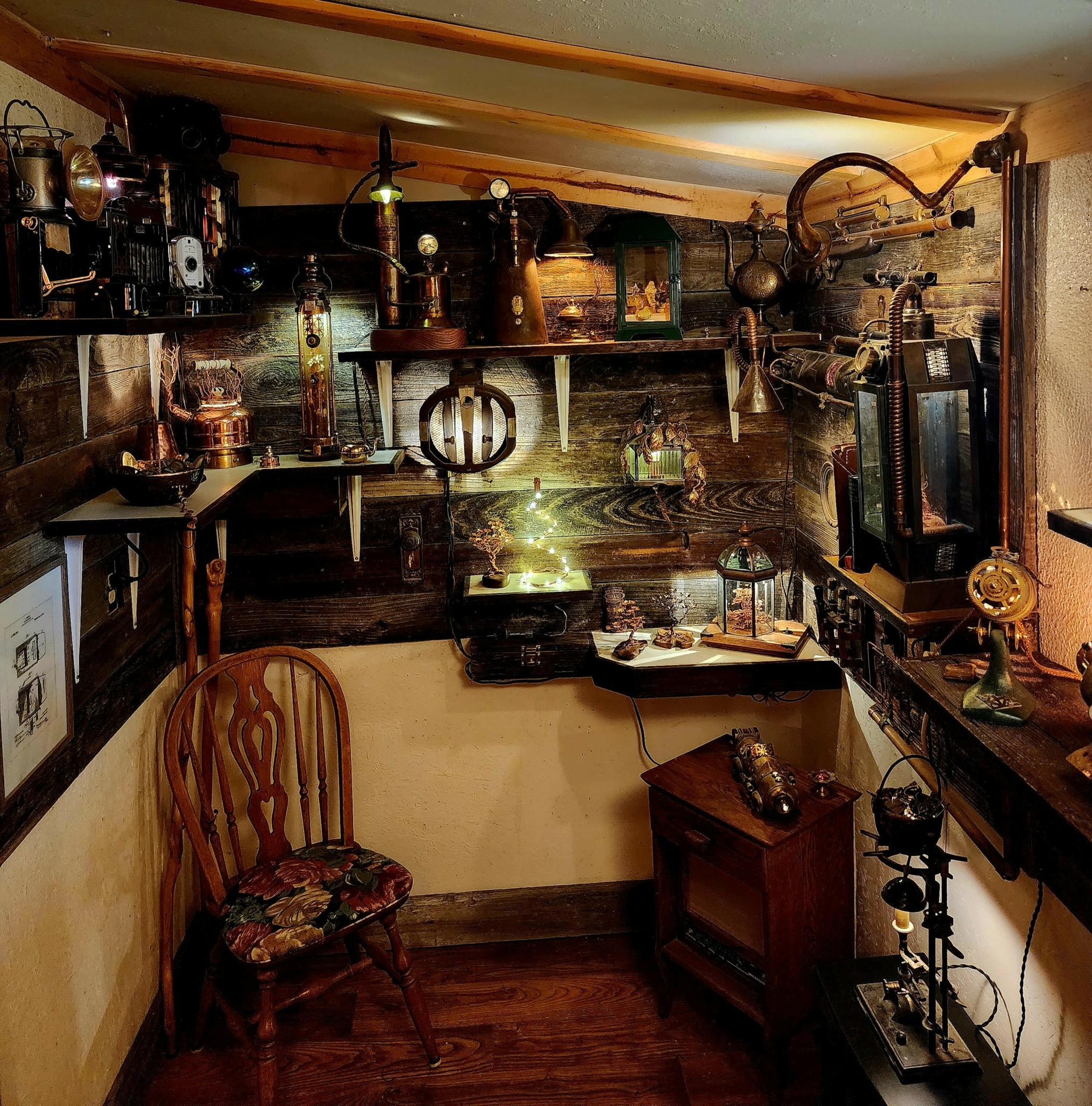
own abilities. So he taught me to learn. He’d been dead for years before I ever built my first Steampunk lamp, but I can feel his guiding hand on every project I attempt. I see absolutely no sense in trying to speed up the learning process. In my experience, doing so invariably makes you miss something. . My Pop had three rules to any project, no matter what it was: 1) have a plan 2) Know how to fix it (because your plan will turn to dust in very short order) and 3) Know when to quit. These three rules are the basis for every new thing I attempt. So specific skills such as soldering, shaping metal and wiring -while important – are only the physical manifestation of the 3 rules. In short, WHAT I learn is nowhere as important as HOW I learn. Read more>>
Elisha Akram
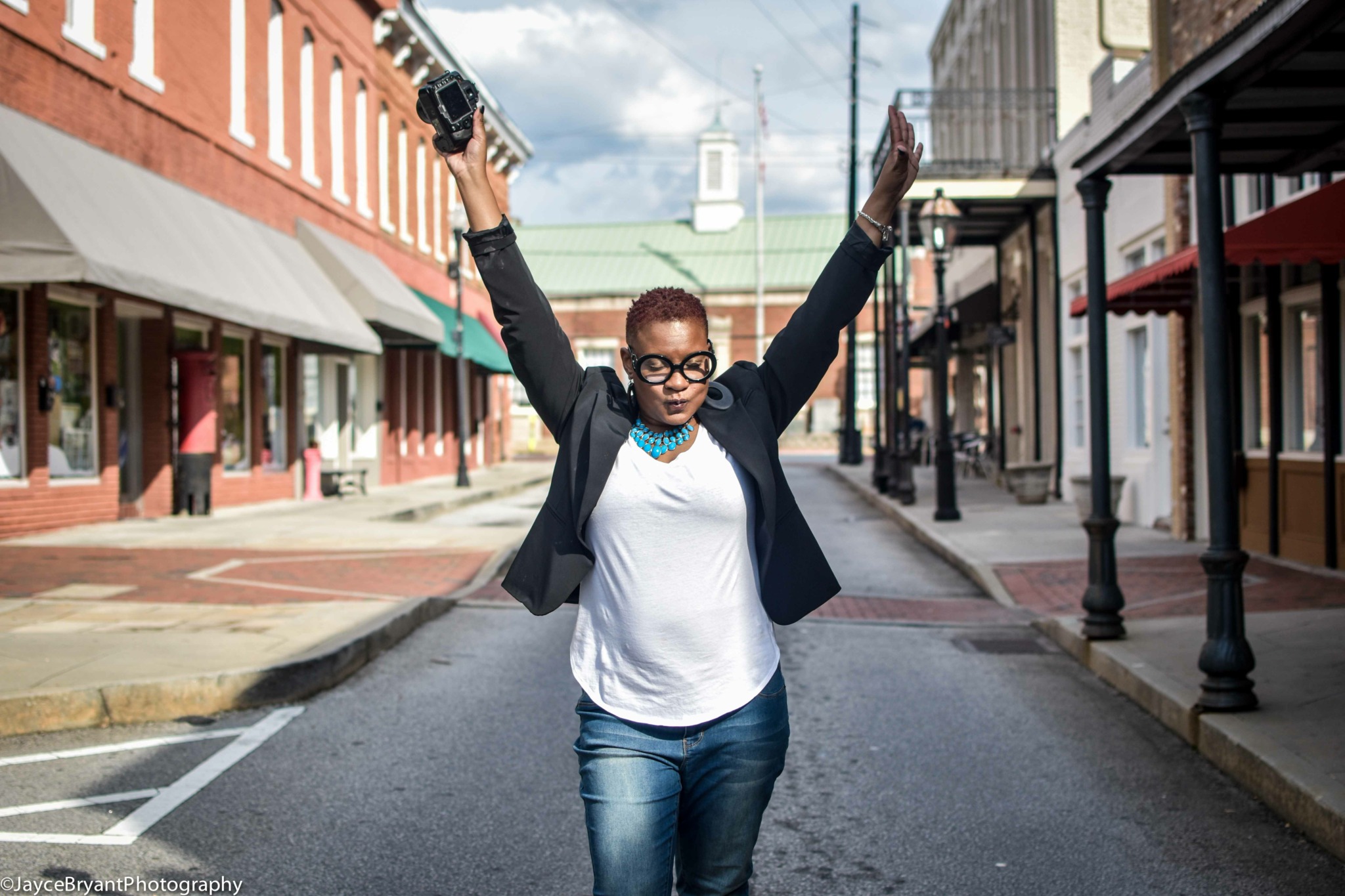
I learned by doing. I had a childlike curiosity and fearlessness when it came to picking up a camera and taking photos. I wasn’t afraid to try, and at the time, I was genuinely proud of the work I was producing—even if I didn’t fully understand the craft yet. That excitement and joy kept me going and gave me the confidence to keep improving. Knowing what you know now, what could you have done to speed up your learning process? Looking back, I wish I had invested in photography classes or workshops earlier in my journey. Learning from experienced professionals would have helped me refine my skills much faster and avoid some of the trial-and-error that took extra time. Read more>>
Hernán Angulo

I was in community college and decided to try out acting. I took a few acting courses and was cast in a play festival where students in the theater department wrote, directed, and produced their own plays. After taking fundamental acting courses and being in a couple of plays at my community college, I knew that I wanted to pursue acting as my career. I transferred to a four year institution where I received my BA in Theater and Performance Studies. I graduated with wanting to hone my craft since my education at university was more academic/scholarly based. Luckily, right after graduating from undergrad I was accepted into American Conservatory Theater’s MFA program in San Francisco. Looking back I think I could’ve been more susceptible to adjustments that my instructors gave me during my time in the program. I think at times I was scared to make bold choices in my classes and the fear of not making the “right” choice would paralyze me from making any choices at all. I learned later that we learn more by making mistakes. I wish I realized sooner that I was in a safe space to make those big choices and mistakes. I know that would have definitely sped up my learning process for sure. Read more>>
Gabriel Hays

As with any career in the arts, learning never stops. I’ve reached this point by continually seeking out new information, teachers, and collaborators. Mastery takes consistent effort over time, and staying consistent allows growth to happen—often more than you realize. The most essential skills, in my experience, are tenacity and resilience. One of the biggest obstacles to learning was assuming I knew something before I truly did. I’ve found that the more I’m willing to recognize what needs improvement, the faster I can grow. Read more>>
Terra Layne
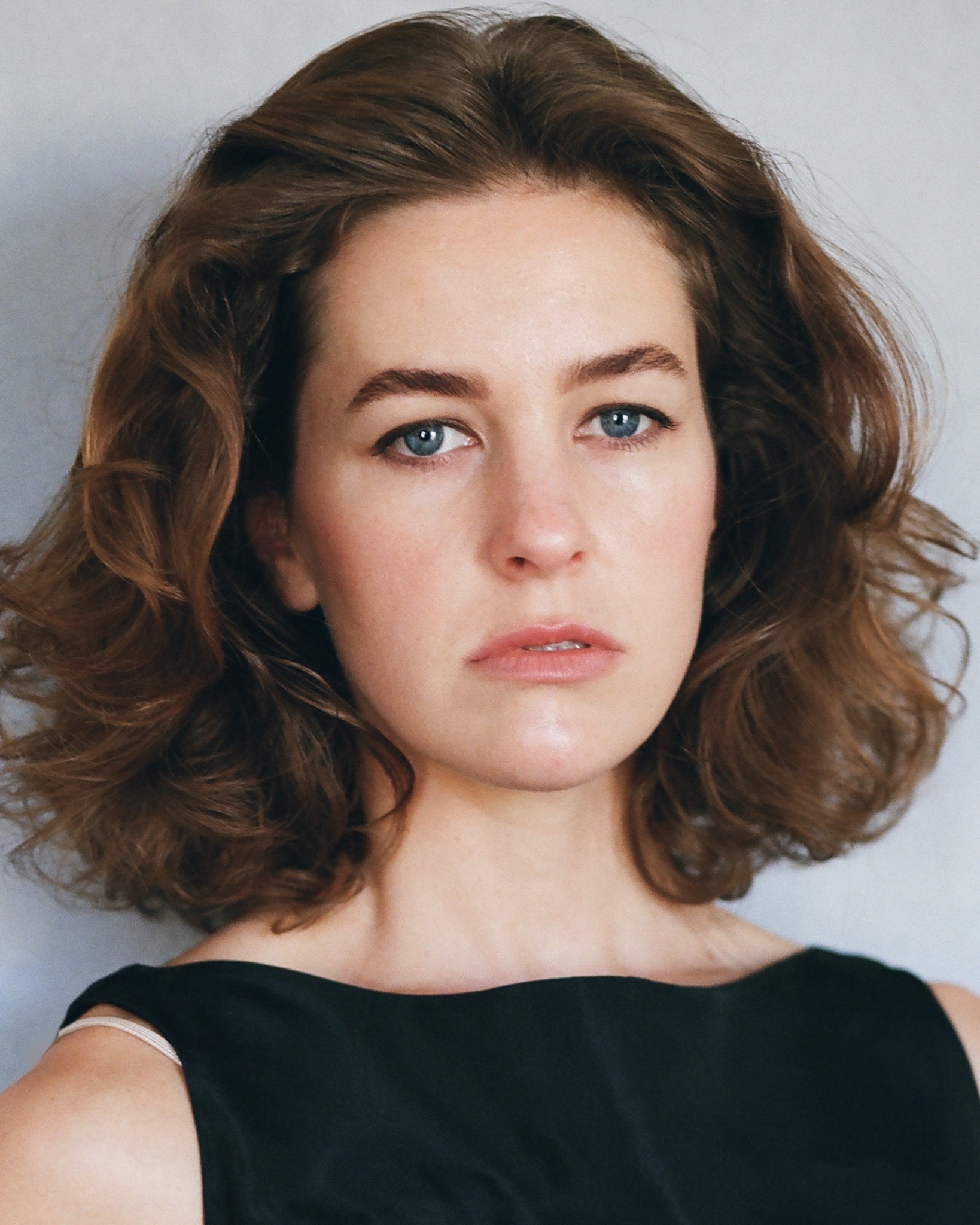
My journey has been anything but conventional. It’s been a mix of classes, self-study, reading, and hands-on experience. I mentioned earlier that I studied part-time at Lee Strasberg, which helped me understand the structure of method acting as a practice. When I explored Meisner on my own, I started comparing techniques, taking what resonated with me from each and carving out my own approach. I did the same with books, films, and interviews—I am constantly dissecting performances and absorbing what I find powerful. That’s why I consider myself largely self-taught; I’ve created my own method. It’s also involved a lot of self-observation, constantly experimenting with my instincts and reactions to shape the work into something uniquely mine. I find a lot of joy in it—it’s like solving a puzzle with multiple solutions, and it’s incredibly rewarding when you find that piece that truly lands. Read more>>
Jack Johnstone
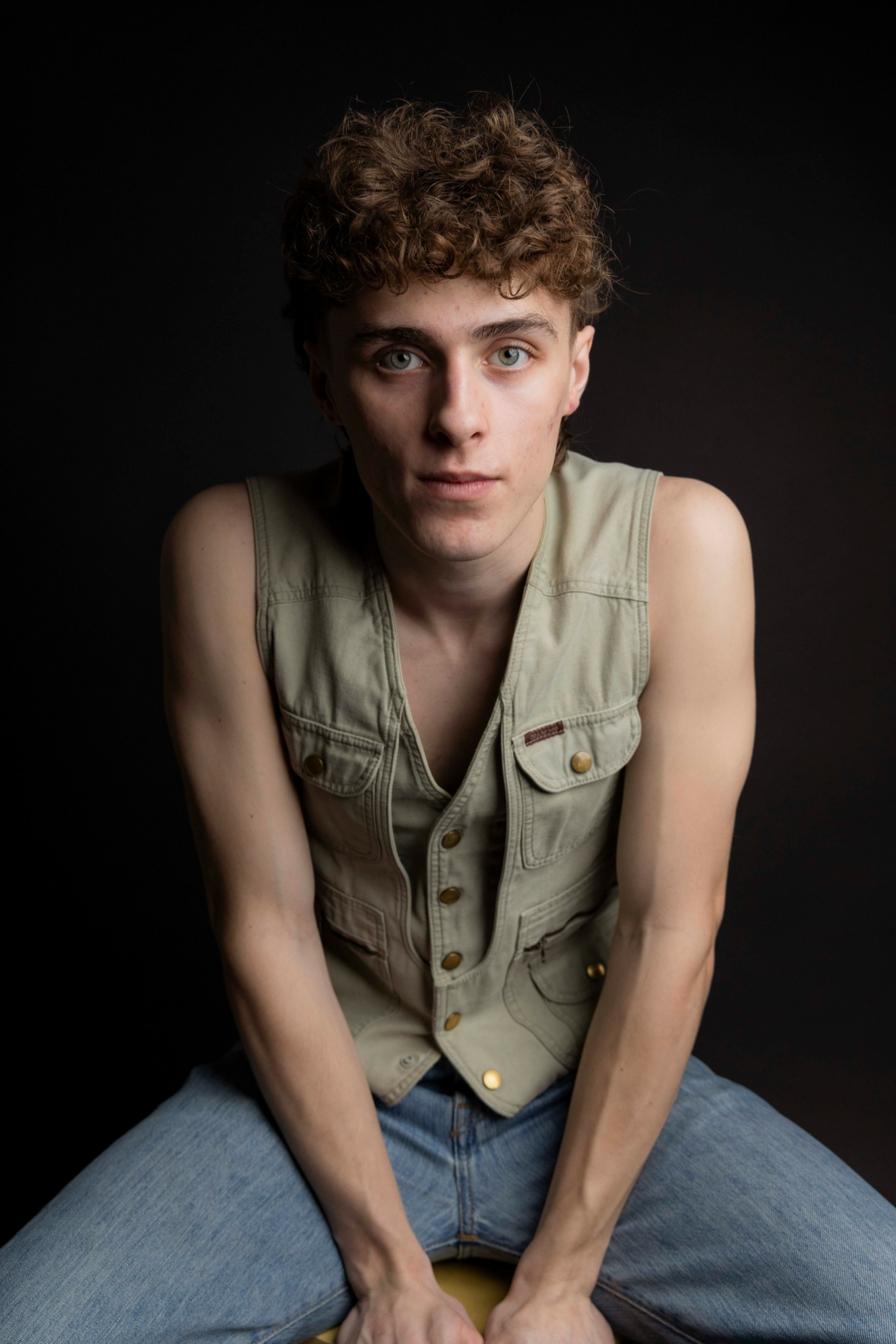
The beauty of acting is that it’s something that you build in parallel to your day-to-day life. Everything in acting is drawn from experience and a wealth of emotional and social knowledge. Living is learning. That being said, drama school (I studied at the American Academy of Dramatic Arts) was instrumental in my personal and professional growth. What I took away from that time is priceless. However, before considering this kind of training, especially conservatory training, it’s important to note all the things it can’t do for you. It will not give you all the answers, it will not hold your hand, and it will not expedite your success. There’s no way to rush the craft; you have to accept that you are in the place that you are in and that it’s a constant process. What it will do for you, if you are willing to surrender to it, is teach you abandon, truth-telling, and play. Yes, there are techniques—my school focused on Meisner and Uta Hagen. Technique-wise, the most important thing I learned was the art of listening and script analysis. However, all of the technical aspects of acting are useless if you haven’t first learned to be vulnerable, let go, and have fun. Read more>>
Raylen Albey

In the short time I’ve been in this business, I’ve had the luxury of being able to learn from so many incredibly talented people. People who have been on TV, people who have been able to perform and compete all over the world, people who I’ve looked up to for a long time. However, I never would have learned those lessons, or met all of those incredible people, had it not been for Ethan Case and the Palmetto Wrestling Academy. I was a part of the school’s second graduating class, starting in January 2019, and debuting in January the following year. A lot of people, including other people in the business, will hear that the training lasted for a year and think that that’s crazy and that it shouldn’t have taken that long because theirs didn’t. But honestly, I am so thankful that it did. The training program at the academy is so thorough because the goal is to have students debut as the complete package. There is a lot involved in what we do, and if not taught with the care and respect it deserves, it can be incredibly dangerous. On top of that, everyone learns differently and at different speeds. So it doesn’t matter how long it takes, our students graduate when they’re ready. You just have to trust the process, give it your all, and get out of your own way, which is more often than not, the hardest part. Read more>>
Kyle Soto
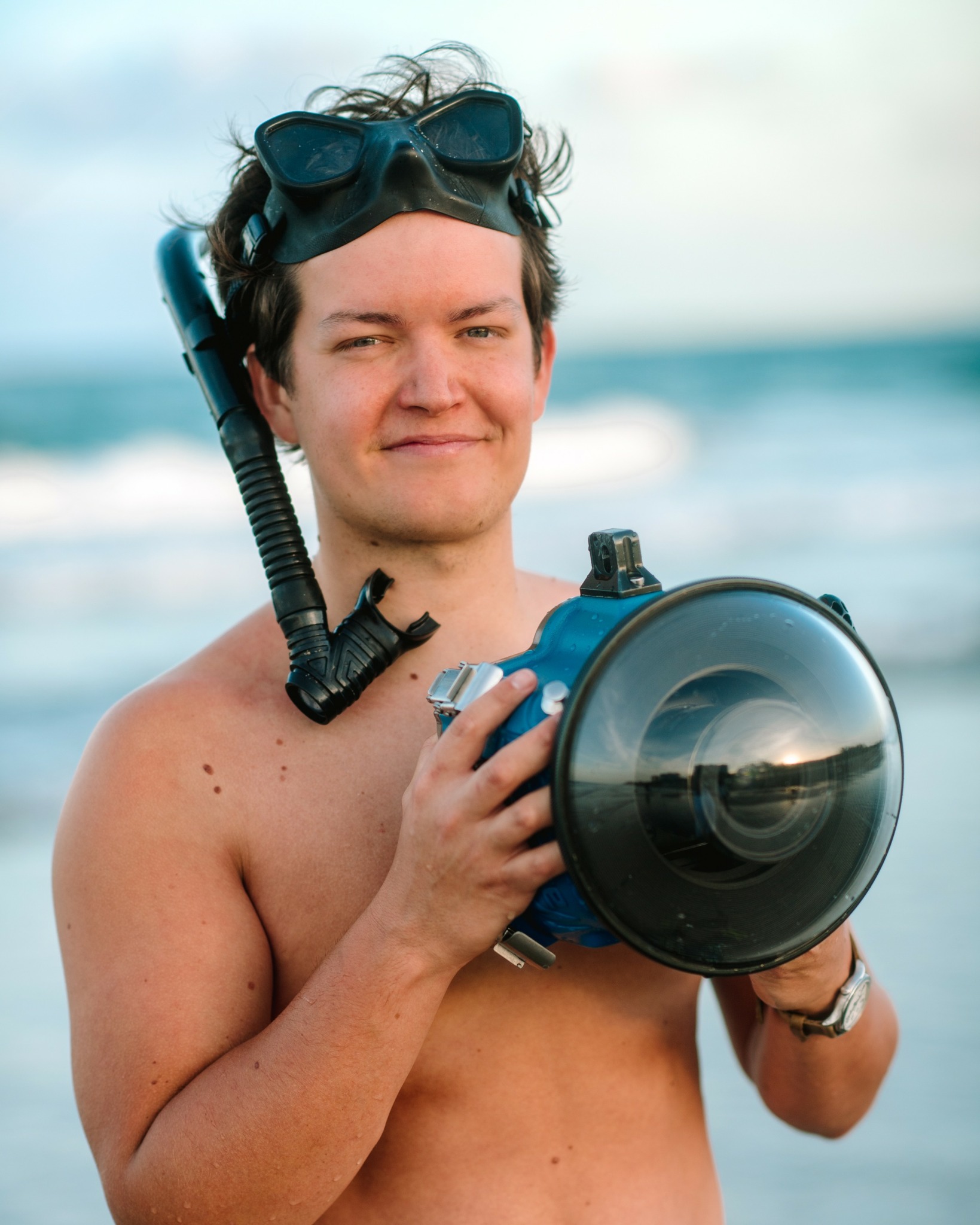
I learned underwater photography through a lot of time spent in the ocean, combining my background in freediving and surfing with a growing understanding of how to use a camera underwater. I started small, using a GoPro, and gradually worked my way up to a DSLR. Most of my learning came through trial and error—diving with my camera, experimenting with settings, and figuring out what worked. I also had incredible mentors who taught me the fundamentals of photography and helped me refine my skills. If I could go back, I would spend more time practicing photography in controlled environments, like at home or in a pool. Early on, I would head straight into the ocean to learn, but it’s a challenging place to figure out camera settings. Taking more photos in low-pressure environments would have helped me build confidence with my camera and better understand its settings before heading into the unpredictable ocean environment. Read more>>
David Campo

Starting out in the DJ business was hard at first, even though I was an assistant to a co-op DJ company. I watched and learned how he did things, and I took to the internet to get ideas on how best to put together the perfect timeline, and little by little I managed to save up enough money to buy my first pair of speakers and a mixer and started my own mobile DJ company. I had plenty of CDs, I just didn’t have the exposure, so I began to do a lot of class reunions. Doing those events was okay, it paid the bills and it got me some experience on knowing what to play and when, but the joy and excitement really wasn’t there, not like the joy I surround myself with at a wedding. In the beginning I did a lot of birthday parties, Cotillions, corporate events but it wasn’t what I truly wanted to do. Once I did my first wedding, it was all I wanted to do; I wanted to learn more about the technical part of a wedding and began to get more acquainted with classical music to make myself more familiar with the perfect mix of prelude music. Read more>>
Hussain Al-khalil

The first big step I took was instilling discipline in my practice. I made a goal to shoot one photo session and one video session a week to train myself. I was able to keep up that process for 2.5 years straight not missing a week. It helped me with on the spot problem solving cause issues I may have ran into on a gig I had run into in practice and was already prepared for it. The main skills I felt I learned was learning how to pose models. That was something I struggled with learning and how to engage a model, especially inexperienced ones. Id use the ability on Instagram to have a save folder of poses that I liked and would try to replicate and then innovate to help get better at direction. Read more>>
Jared Roach
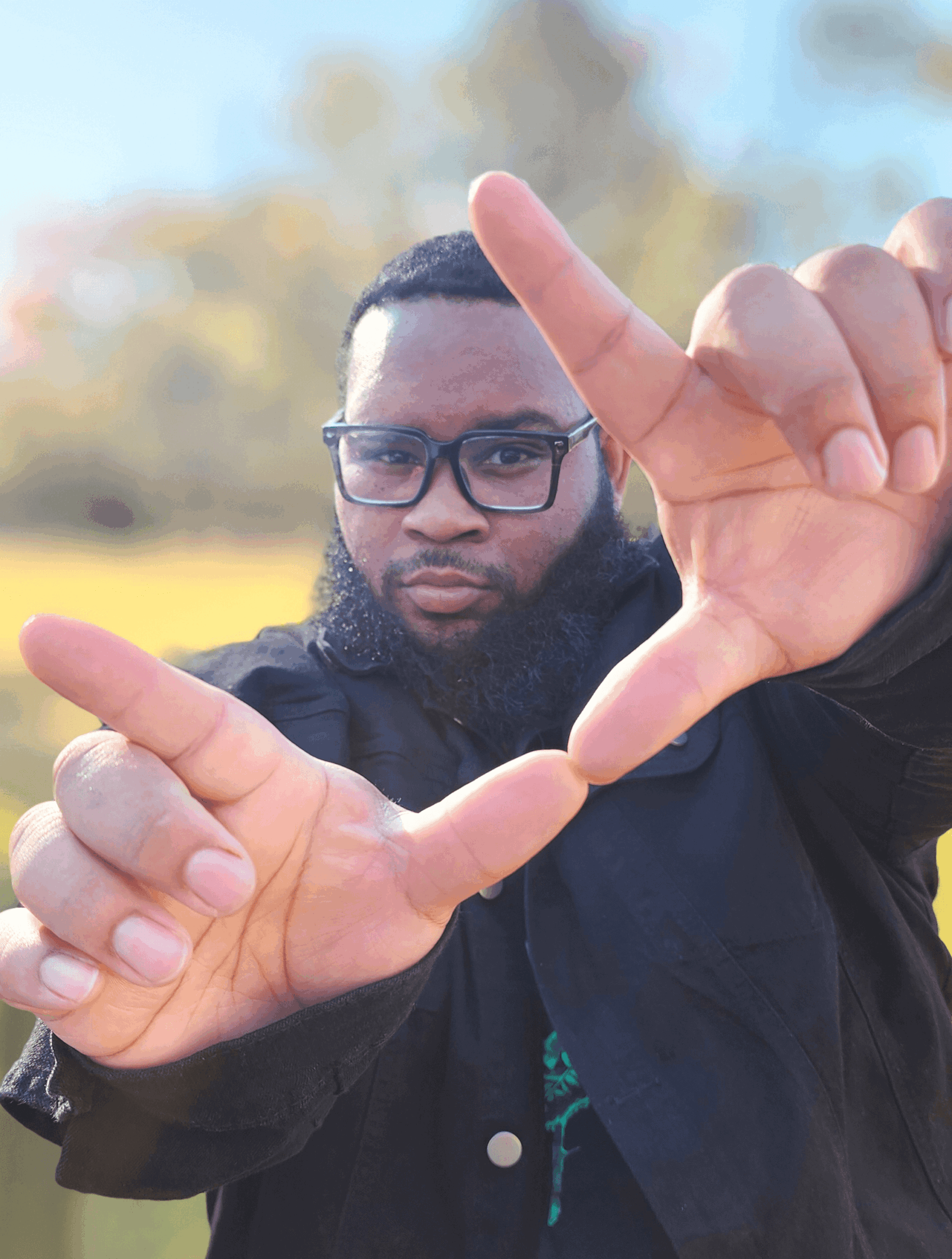
My journey to mastering my craft has been rooted in understanding and refining the creative process—not only for myself but also for my clients. Over time, I’ve learned how to transform initial brainstorming sessions, where ideas flow freely and openly, into concrete, tangible outcomes. This ability to move from vision to execution has become one of my most essential skills, both in my own work and in helping clients navigate their unique creative processes. I take pride in guiding them from concept to completion, ensuring they feel empowered and aligned with their vision every step of the way. Read more>>
Alie (alexandria) Hernandez

I was able to pick up this skill via a children’s crafting kit I saw at a bookstore. I was bored one Christmas season and I decided I wanted to do something easy on the mind. It sparked an obsession and opened a world I didn’t know existed. This little craft has taught me so much, everything from business techniques to inner peace. Truly that kit was the best thing I ever bought. The most essential skills are having a dedicated and organized space, and not letting too many projects at once overwhelm me. Felt isn’t the most common craft so that was an obstacle in learning more but Instagram provides a wealth of knowledge to the point where it seemed as though everyone was making felt crafts. It turns out it was just my algorithm. Read more>>
Erica Stenvall

Thank you so much for having me! First off, allow me to introduce myself. My name is Erica Chan Stenvall, I am a newlywed (I got married this July at Malibu West Beach Club), and I am a content creator passionate about design, fashion, fitness, lifestyle and travel. I am also a big advocate of mental health and hope to introduce that side of me in my future content. I am active on Instagram, Tiktok, and YouTube (handle: ericaychan). I am also a USC alumni, and am a First generation Chinese American. I learned to create content by first consuming multiple different streams of content, and content from all the different social media platforms. I watched a variety of carefully chosen YouTube videos to learn the information quickly, such as how to edit and film. I also learned how to create content on Instagram and Tiktok, specifically, by spending a lot of time on those apps learning how their interface and navigation tools worked. I think the most important skills are being able to be comfortable in front of the camera, having a clear plan and direction before filming, being able to brainstorm and think outside the box, and of course knowing how to film, edit, and post the content. Knowing what I know now, I would have tried Tiktok earlier, because I think there is ample opportunity to grow on Tiktok, especially as a new creator. And in terms of obstacles, I would stay time. The more time you have to learn something, the better at it you become. Unless you have a mentor, of course. Read more>>
Camila Knigge Unibe
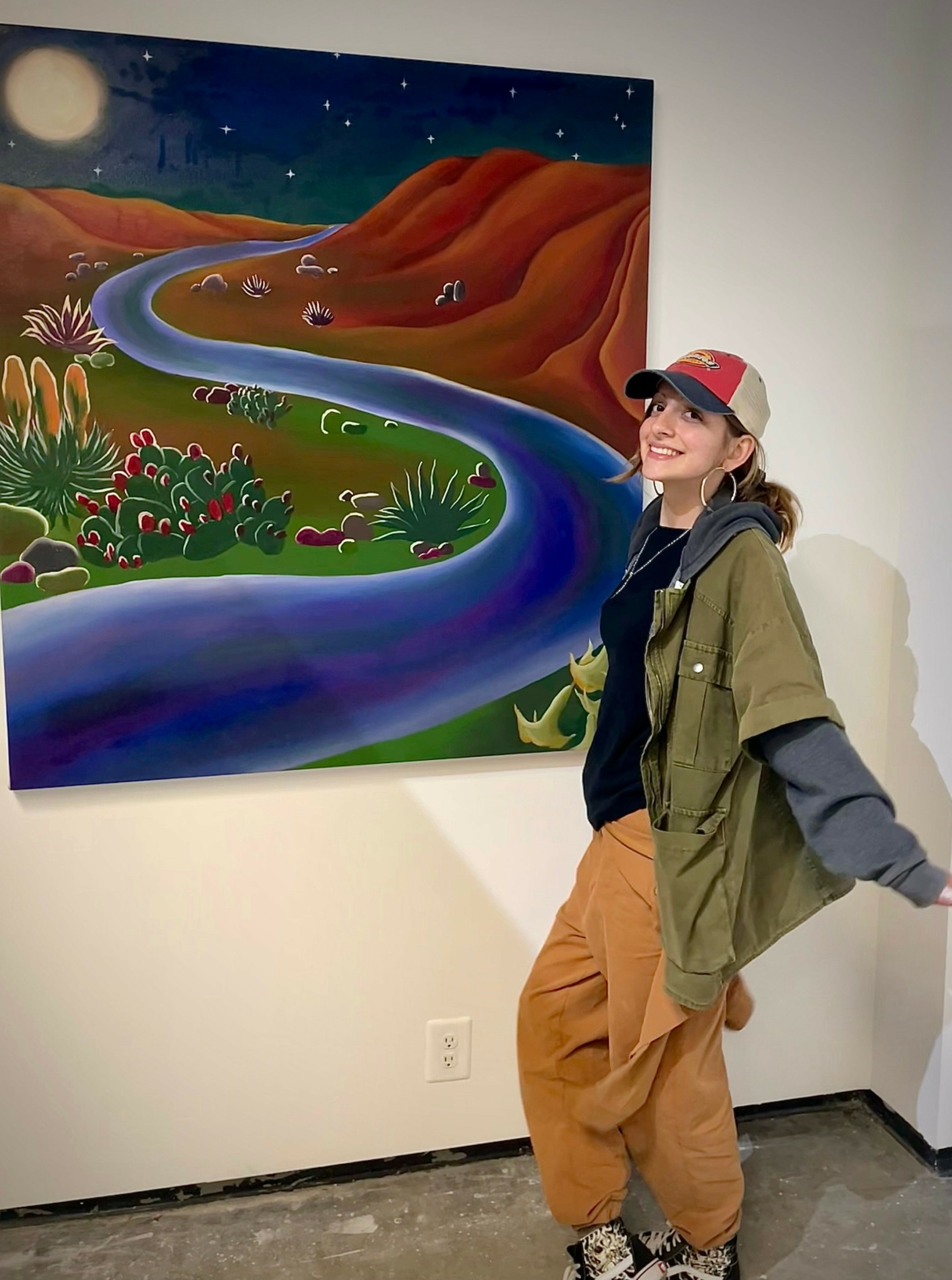
Learning the craft simply takes time and patience. It’s not about speeding up your learning, because there is no such thing as perfection in art and painting. There is only progress, there is only creation. Learning the craft is nothing more than a commitment to the practice. It’s about showing up to your canvas, your paper, your materials. Not every piece of Art you make is going to be your favorite, in fact, most of it you will probably hate! But it’s about pushing through the moments of I hate this, this looks nothing like in my head, or I don’t know how to do this, it’s just about showing up and doing it. Doesn’t matter how you do it, just that you do, and often. Read more>>
Wardah Halim

I started doing henna in the early 90s when I was about 12 years old. I was deeply in love with the fragrance, the designs, and the color of the henna on the skin. So I would draw the most terrible designs obviously, all over my hand and arm in henna even though I did not know how to do it. I did not take any formal training to learn how to do henna. It was a case of intense passion for the artform, and dedication to practice. Could I have sped up the learning process? I do not believe so. Any skill you want to get good at, just requires consistency. 10 minutes of practice every day is better than 2 hours of practice only on a Sunday. Read more>>
Sara Wilkes
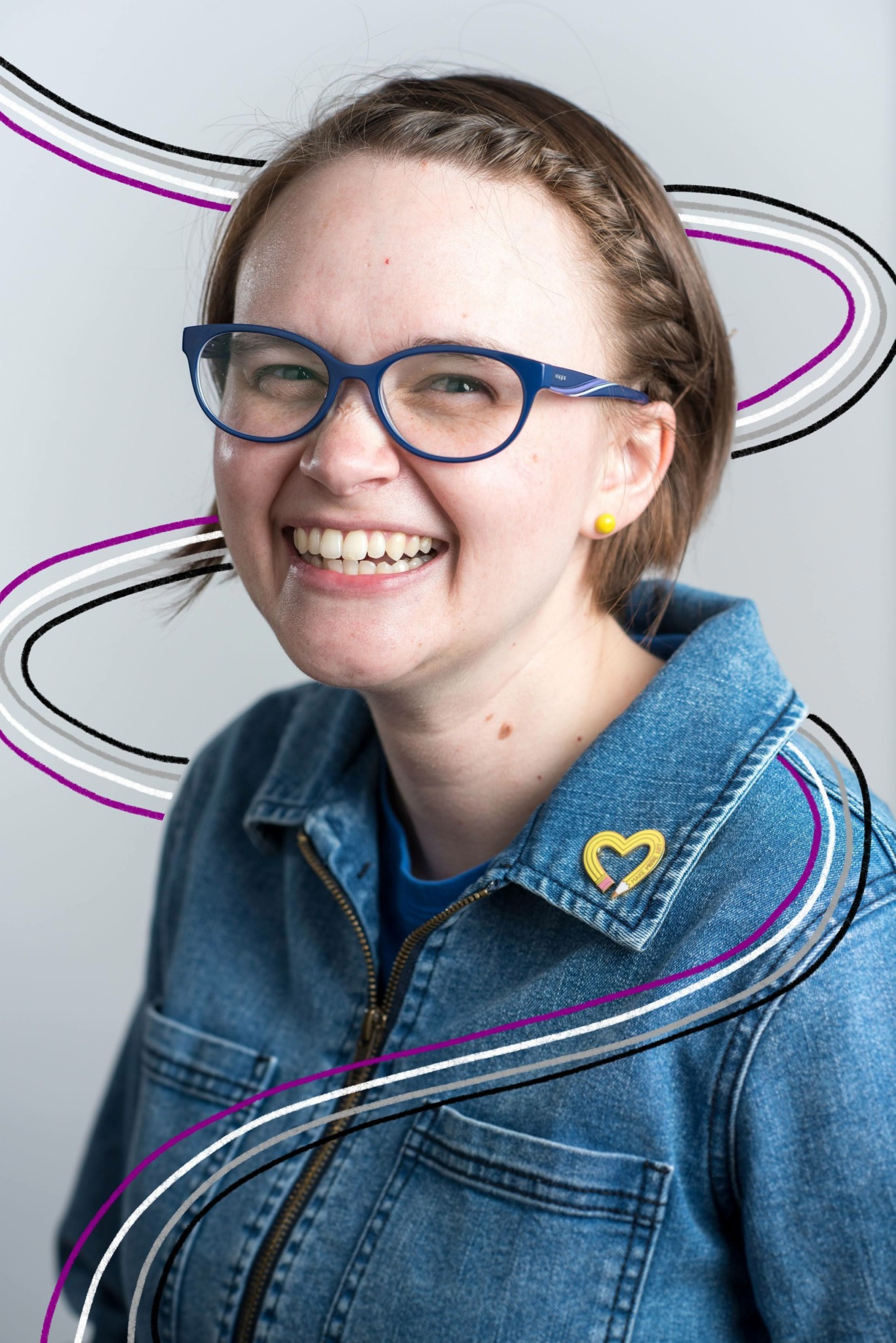
I first encountered calligraphy as a child when my mother bought me a basic calligraphy set. I loved poring over the instruction booklet and trying to recreate the letterforms. As I got busier with schooling, I remained interested in art, but didn’t prioritize it. Calligraphy found me again after college, and I began teaching myself brush lettering. A lot of calligraphy is building muscle memory and I think I did a good job of that through self-study. My skills expanded exponentially, though, when I joined a calligraphy guild. There are guilds around the US and the world full of dedicated calligraphers and calligraphy students. I’ve been able to take classes from leading calligraphers and learn from those already in the business. The classes and the connections are so worth the membership fee. I currently serve on the board for my local guild, The Society for Calligraphy and Handwriting, based in the Seattle area, and I’m happy to be able to contribute to the group and help keep calligraphy alive. Read more>>
Devin Jane Febbroriello

I tend to think of everything in life unfolding in a spiral pattern, and my career is no exception. In many ways I think filmmaking might have an especially complex pattern of unexpected twists and turns, so it requires a lot of patience and stamina to enter this field. Within the path the learning never ends, I think it more so changes tone. The spiral symbolically represents the experience of a consistently evolving process of learning and growth in which similar realizations are passed by again, but within a new level of perspective that inspires fresh understanding. So there is a need for never ending curiosity and desire to learn, but also a need for a lot of openness and grace within the unknown. There is a structured machine-like quality to the production process that is extremely important for maintaining the story within the time and elements allotted. But, simultaneously there is an enchanting, ethereal, and numinous quality that sits within the core of it all. Proper respect for both aspects is equally important and learning how to negotiate the push and pull between these opposing forces is a skill that is developed through doing it… over and over, across many projects. Read more>>
Wendy Angle
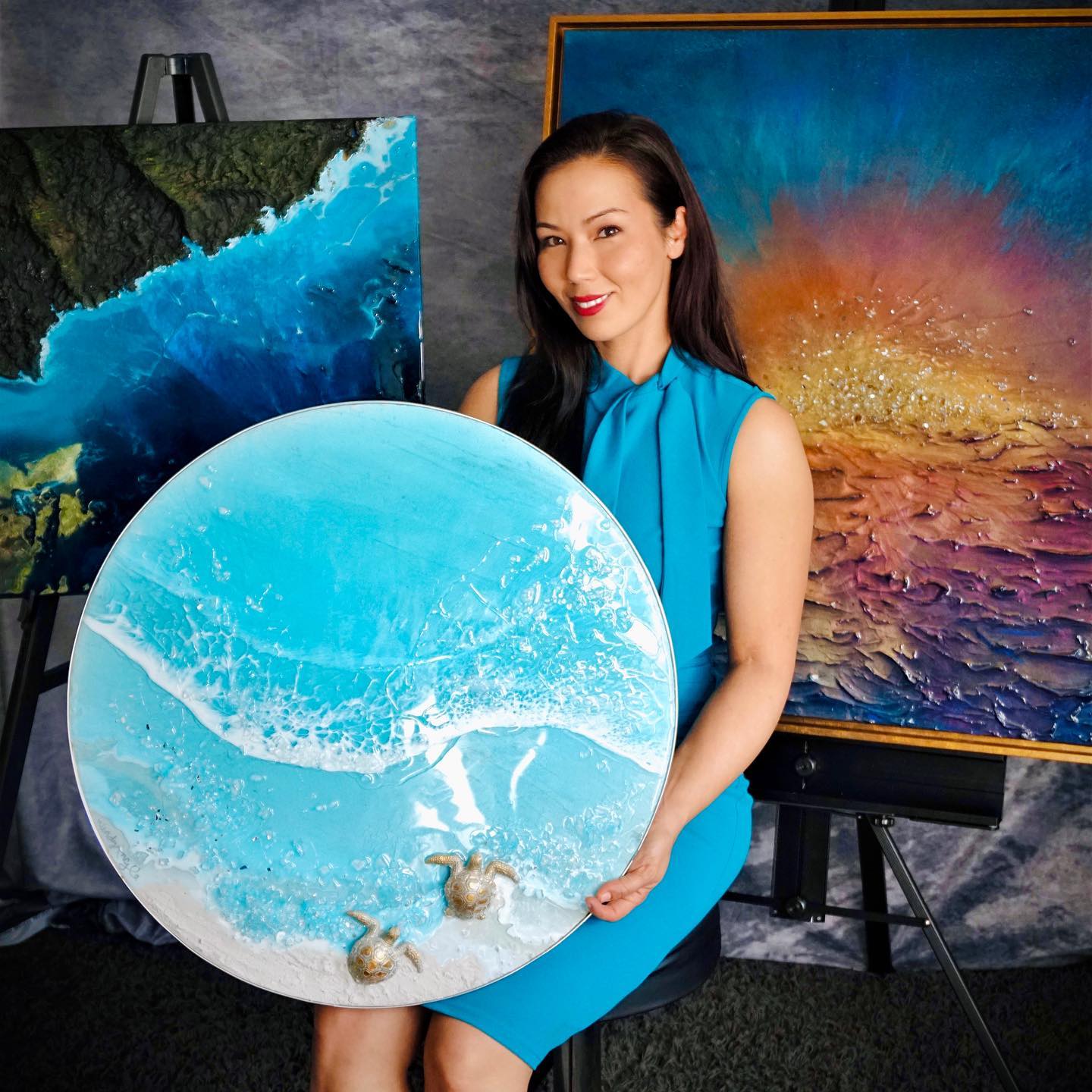
I started painting about 7 years ago. While I have always been interested in the arts and have dabbled at numerous mediums throughout my life, the turning point came when I was introduced to resin. I am a sign language interpreter by trade. It does not seem to be a coincidence that many other interpreters have an artistic/creative side. An interpreters work is quite unique in that a good interpretation channels the words and intentions of those you interpret, putting your own identity on the backburner. Creative outlets seem to be a way for many of us to express our own thoughts and feelings. (Most of my interpreter friends do some sort of knitting, crochet, drawing, photography, etc. ) Read more>>
Laura Pursell
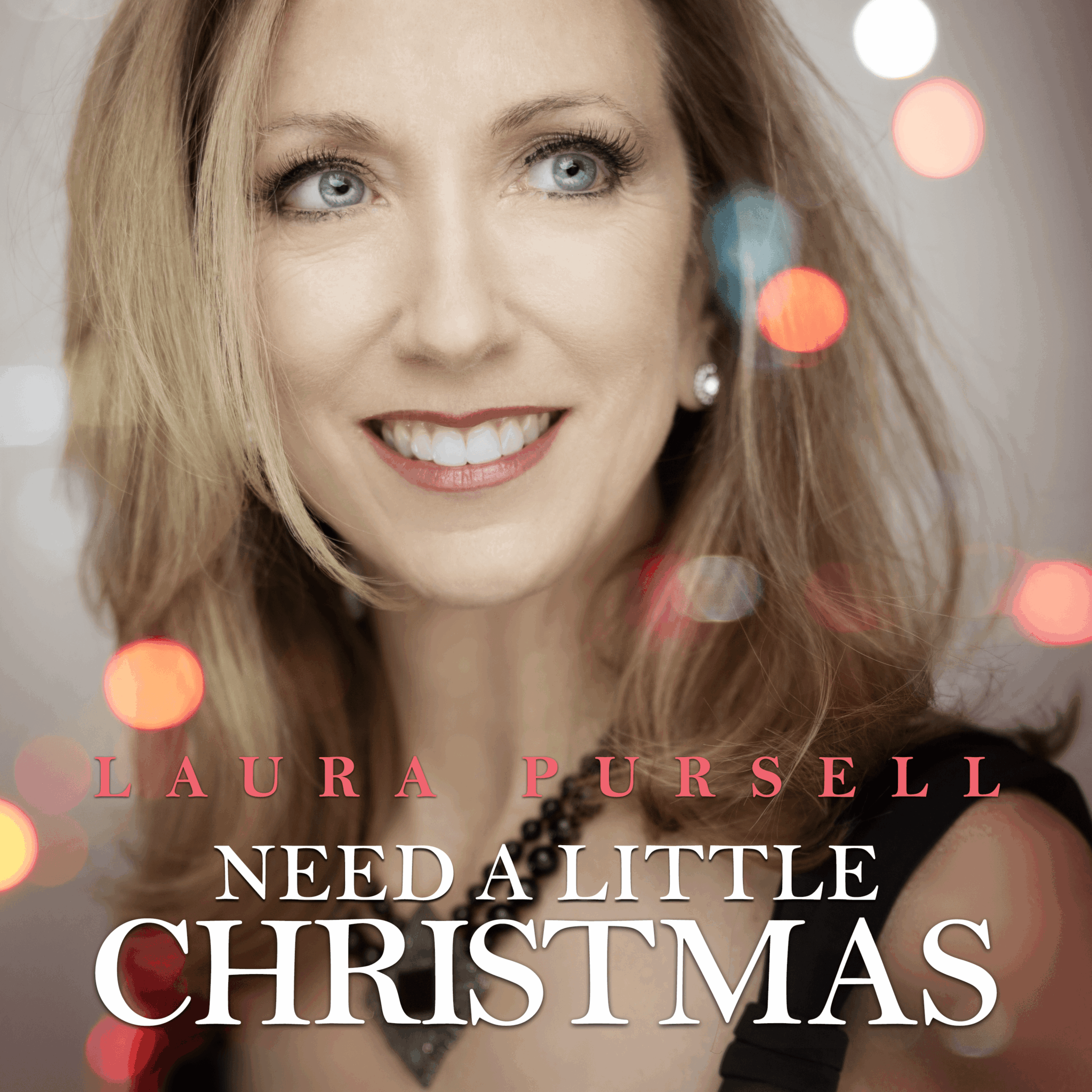
My dad was pianist/composer/professor Bill Pursell, so I grew up surrounded by all kinds of music – classical, pop, country, etc. But I didn’t really find my voice until I was in my 20’s, and that was by working all these jazz greats I was introduced to once I moved to LA. I learned on the fly, while singing with Frank Sinatra’s guitar player (Ron Anthony), Sarah Vaughn’s pianist (George Gaffney), the guitarist from the Dinah Shore show (Barry Zweig), and one of the greatest drummers of all time (Earl Palmer). They taught me everything about time, tone, “getting in and getting out” (that was Earl!), and phrasing. I had such reverence for these guys, and when I came began working with my Dad in my 30’s, he was blown away by all I had learned. Read more>>
Chaunte Vaughn
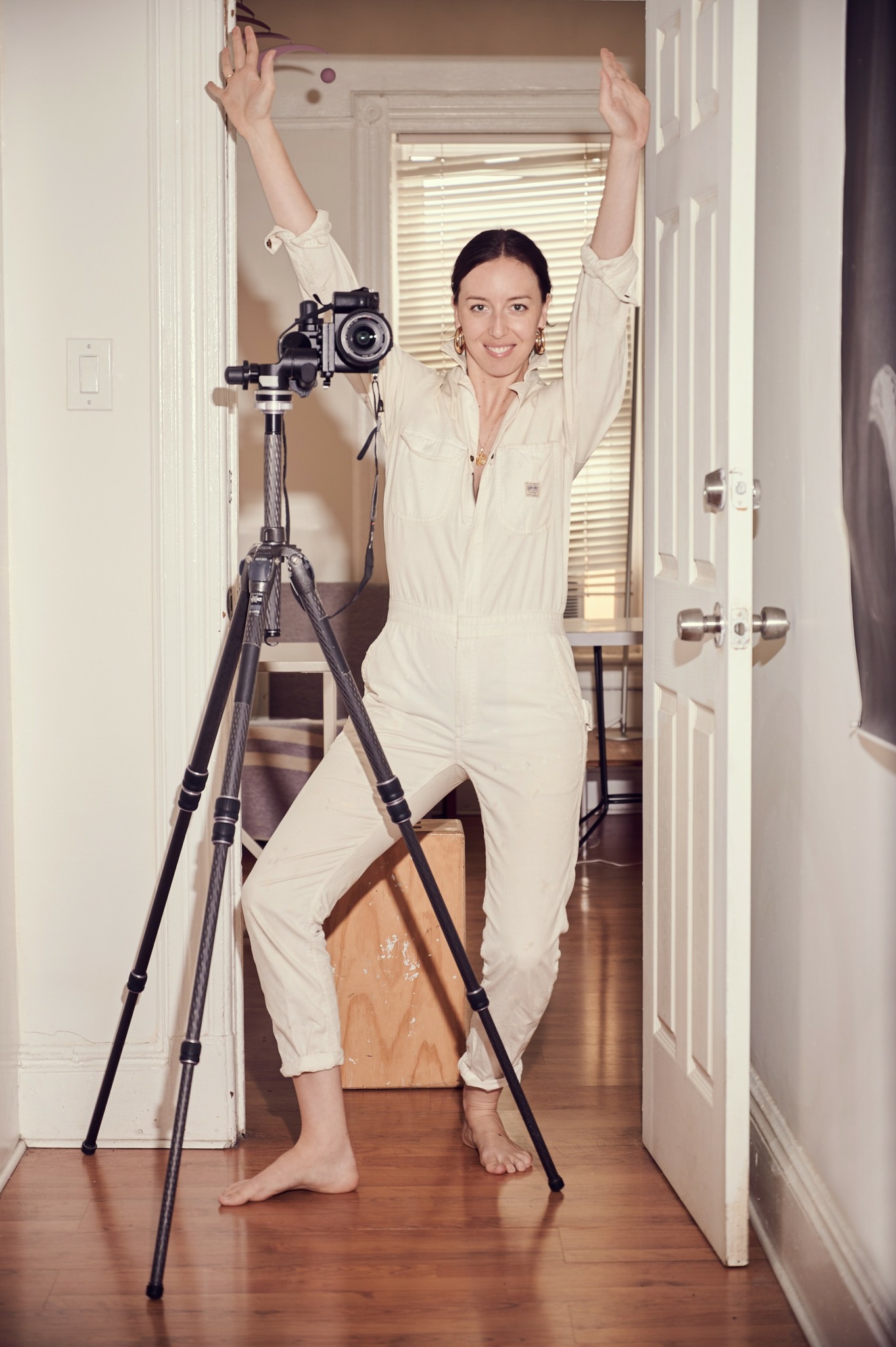
As a lifelong creative, I’ve spent years coming to the realization that photography is an ongoing journey, filled with lessons learned along the way. I began to specialize in photography in college and it was there that I learned the technical basics— how to use a camera, composition, lighting systems, and software. When I moved to New York in 2007 I was lucky enough to learn the ropes of being on set by assisting other photographers, gaining hands-on experience in dealing with clients, managing shoots, and navigating the unspoken rules of the business. Read more>>
A. A. Rubin

When I started college, I thought I was going to be a political science major. About halfway through, I was dissatisfied with this choice, and, since I had wanted to be a writer since I read the Lord of the Rings in seventh grade, I switched to a writing/literature major. The classes were, generally, done in the workshop model, which, looking back, I do not think is the the best way to teach writing, but which did force me to write and get feedback from my peers about my stories. I think it is important to find a creative community with whom you can share your writing. Getting feedback is important, but what is even more important is being around other creative people. The energy of a creative community cannot be underestimated. In a society were creativity is looked down upon, where conformity and uniformity rule, it is important to find the people who appreciate your unique brand of individuality and creativity. Today I am part of many creative communities, including professional organizations like SFWA and th HWA, as well as Comic Book School and the poetry community in Long Island. Interacting with other writers across mediums and genres helps inspire me to create my own unique stories. Too many writers pigeonhole themselves into one genre or medium too early. Read more>>
Akila K

I grew up around music. My mother was born and raised in Trinidad & Tobago while my father is Brooklyn bred. So I was able to hear the best of both worlds when it came to music and how it was done. The Soca, from my mom, showed me you could have fun with music, make it entertaining, make it enjoyable, all of that! From my dad, he gave me Hip Hop, which showed me the art of storytelling and being honest with yourself. So I studied both art forms and used it to cultivate my own musical styling. Over the years, both genres have changed significantly, as with most things in life, but I always go back to what I felt when I first heard them. With Hip Hop, I feel it’s a lost art form right now, but I studied all of the great lyricists I’ve ever come across, in hopes that we as a culture, or at the very least, ME, can maintain the basis of what Hip Hop stood for. I paid attention to how they told their stories, their cadences, how they switched the flows in between verses and hooks. Then, I attempted to do it myself. I continued until I got good at it, then great, then outstanding, until there was no doubt from any and everyone that heard me, that I knew what I was doing with words and rhythms. Once I had that down pact, I focused on making it fun and relatable, like how Soca and Dancehall is. Those were my foundations and lesson plans. Read more>>
Baylee Bennett

Fortunately, I knew I wanted to create art since I was a young kid. In high school, I was able to take somewhere near 12 art classes before I graduated. My teachers in high school introduced me to a lot of mediums and led me to many opportunities that got me to be around a lot of different art and artists and ways of being in ‘the art world’. I ended up going to Creighton University in Omaha, NE to study studio art and art history. Although Creighton may not be known for its art department, the faculty there is incredible and the studio classes allowed me to focus on my painting and drawing skills as well as ceramics, sculpture, and printmaking. I have also taken figure painting workshops as well as other painting and drawing opportunities in the Omaha community. Read more>>
Velvet Whip
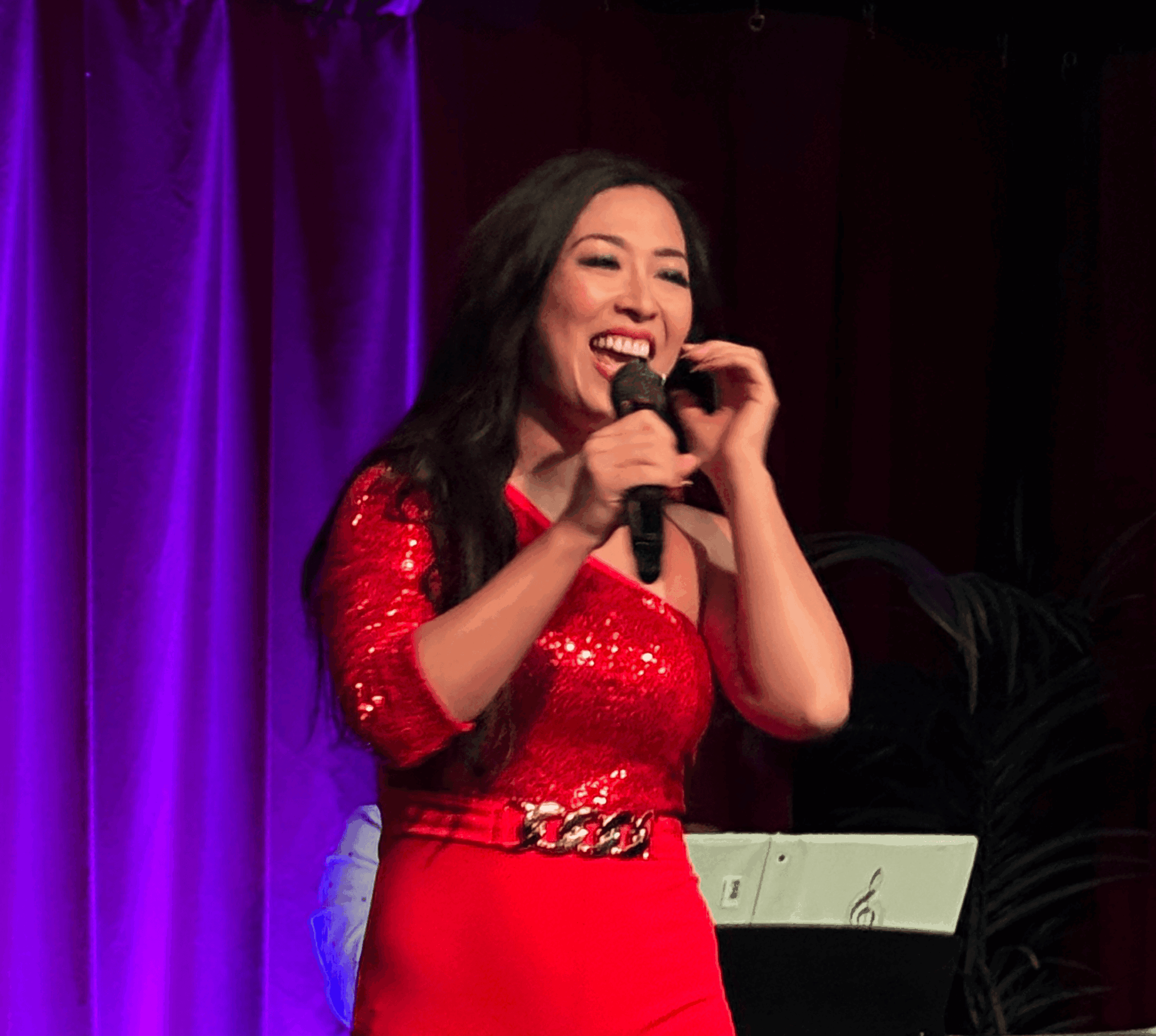
To the most of us, learning the craft of building an art space, while maintaining a day to day operation has really been a wild, sombering journey. Read more>>
J.q. Gagliastro

Writing comes naturally to me. I’ve been writing since age six. My current book “The Diary of a Sugarbaby” is different from what I normally write because the story required me to confront my past (i.e. things I’ve done and thought that I’m not proud of, things done unto me that I’ve been avoiding, et cetera). In the beginning, it was difficult to take accountability and talk about emotionally raw subjects. I had to walk away from the computer from time to time. In the end, it was cathartic to write. I’m happy I didn’t let my walls or fear get in the way of being honest with my readers. Apart from that, most of the obstacles I encountered while learning the craft had nothing to do with writing and had everything to do with publishing and marketing the book. Thankfully, I’m technologically savvy and well-equipped with today’s resources. I did a ton of research and took note of what I needed: a copyright page, Library of Congress Cataloging number, ISBN, an eBook, a barcode, pricing, an imprint, a cover designer, an editor, a formatter, and so much more. I googled the terms I did not know and learned how to acquire them. I found an expert editor, a skilled cover designer, and a formatter on Fiverr. I started an independent press called Gaggy Press. I learned about KDP, IngramSpark, and Barnes & Noble publishing. All of my knowledge of publishing came from my determination, ambition, and research skills. Read more>>
Anne Weber Callahan

Learning ceramics has been a journey, one that’s taken me much longer than I ever anticipated. A few college classes sparked my passion, but it wasn’t smooth sailing from there, I hit plenty of bumps along the way, and honestly, I still do. The real turning point came when I started teaching wheel throwing and handbuilding. As It forced me to break down each step for my students, I began to notice the small, often overlooked details that made all the difference in my own work. It was like the pieces finally fell into place. Read more>>
Nelson Mai

I attended LaGuardia High School in NYC, where I received training in a traditional arts curriculum. We learned to study through observation and imagination, exploring various mediums such as oil painting, marble sculpture, ceramics, and woodblock printing. By my senior year, I had developed a solid body of work that showcased both technical skill and creative expression. After graduating from high school in 2018, I entered the School of Visual Arts with aspirations of becoming a VFX artist. Looking back, I had little understanding of what being a “VFX artist” truly meant. With limited knowledge of digital arts, my professors and classmates became my primary sources of learning 3D. While traditional schooling formed the backbone of my art practice, what really accelerated my learning was self-guided exploration. I spent countless hours scouring YouTube tutorials, Reddit threads, and online forums, searching for the additional instruction needed to bring my vision to life. My curiosity about how 3D programs worked was the driving force behind my growth. Read more>>
Timothy Mccracken
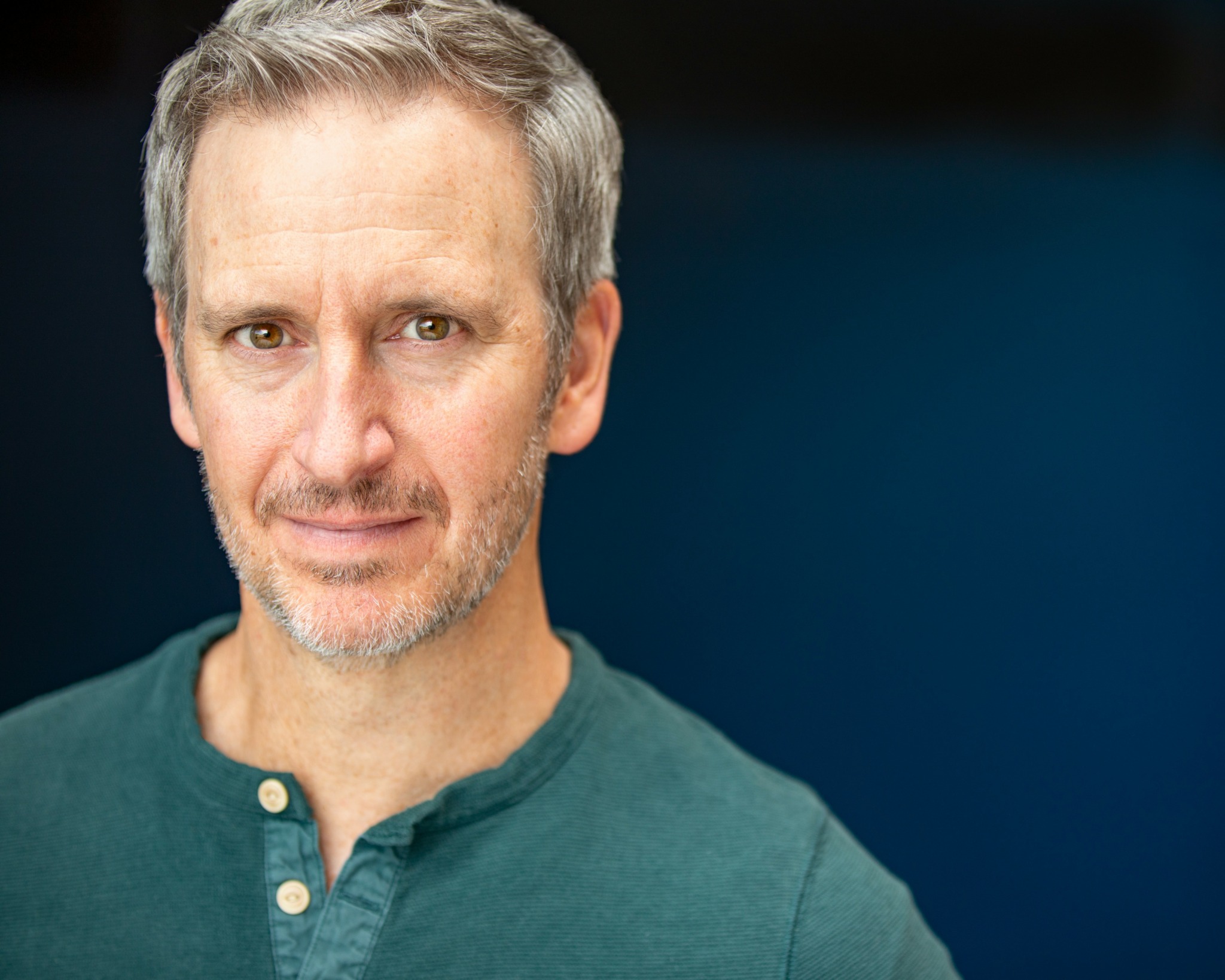
I began my learning journey doing theatre in High School; I very much learned as I went along, mostly by watching actors older than myself practicing their craft and trying to figure out what/how to employ in my work. My true learning journey began at Whitman College, in Walla Walla WA. It is a liberal arts college that, at the time of my attending, had a fantastic theatre program headed by my mentor, Jack Freimann. Here I was able to learn SOO much by doing; I was in 11 plays in my junior year, and 10 in my senior year, doing a wide variety of styles and forms of theatre, while getting my degree. I absolutely fell in love with theatre, acting and our program; I lived, ate and breathed it for 4 years. However, there wasn’t a deep exploration/excavation of the craft of acting; we certainly identified core concepts (objective, given circumstances, relationships, environment, listening and responding, etc), but it was once again integrated most strongly through the practice and DO-ing of the work; there was a lot of imaginative work that was a part of our process. Read more>>
Paytron Saint
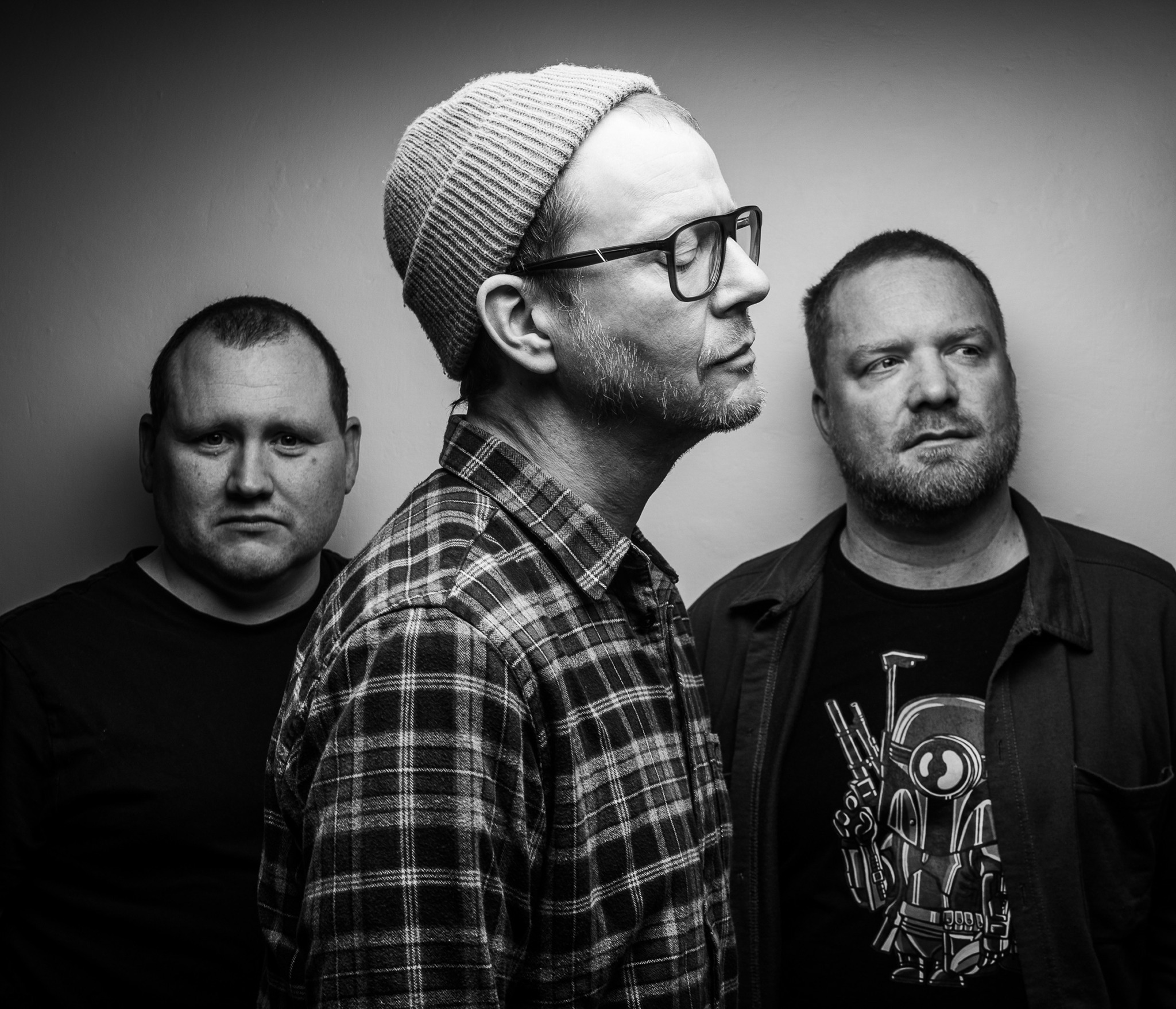
I learned music from my parents. They were in bands. My first memories are of crawling around amongst guitar cables. Read more>>
Amanda Massi
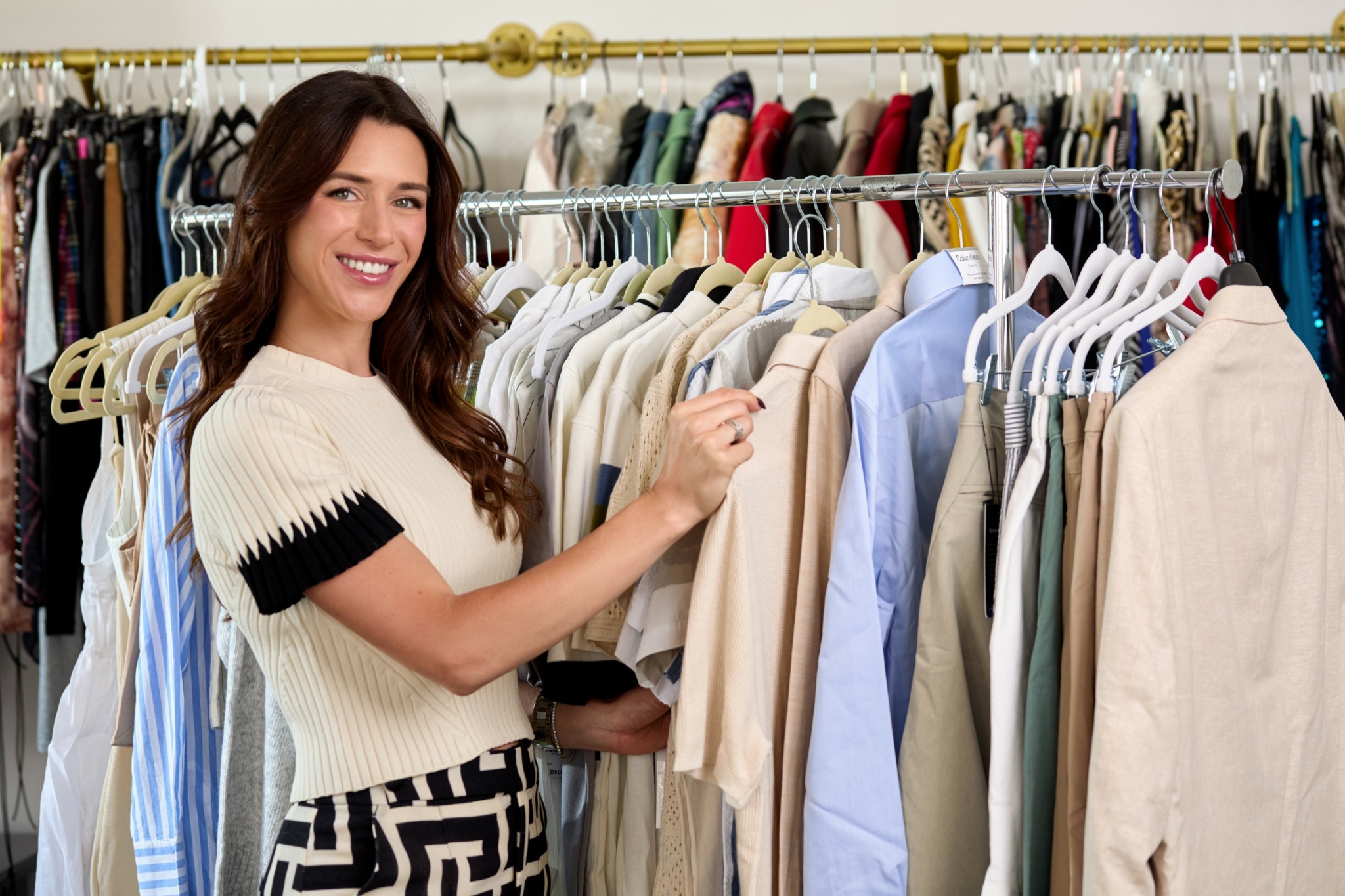
I learned to do what I do through a combination of formal education, hands-on experience, and a deep dedication to fashion. I studied Fashion Design at The Academy of Art University in San Francisco where I earned an MFA, which provided me with a solid foundation in design principles and an understanding of the fashion industry. However, the real learning came from working directly with clients, building my portfolio, and continually seeking inspiration from various sources. Read more>>
Junichiro Mataga

I am a jazz pianist, composer, and arranger based in New York City. I started playing the piano at the age of six. Until I was twelve, I trained in classical piano, but at twelve, I became interested in the guitar and primarily focused on guitar training until I discovered jazz piano at the age of twenty. Looking back, I believe that if I had practiced piano instead of playing guitar, my piano skills would have improved more. However, learning guitar exposed me to a wide range of musical genres (Pops, Rock, Metal, R&B, Fusion, etc), which I feel helped me build a strong foundation. Jazz music, having developed through influences from various genres, benefits from knowledge of diverse musical styles, and I believe this has worked to my advantage. Therefore, I consider the most important skill in mastering music to be “a broad interest in various types of music, without limiting oneself to a single genre.” Read more>>


